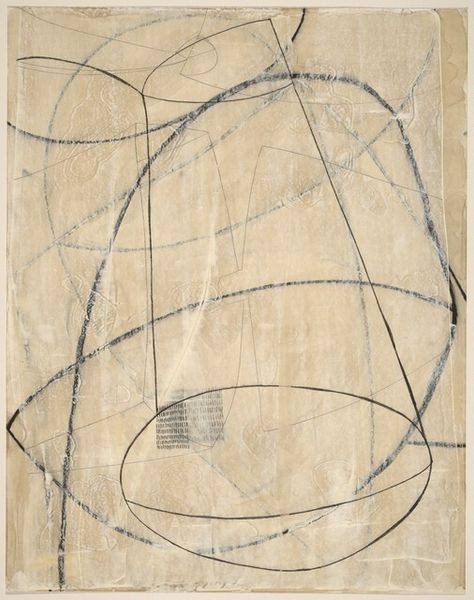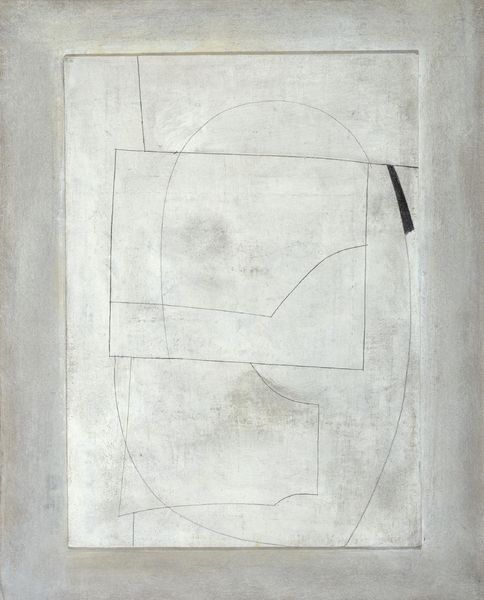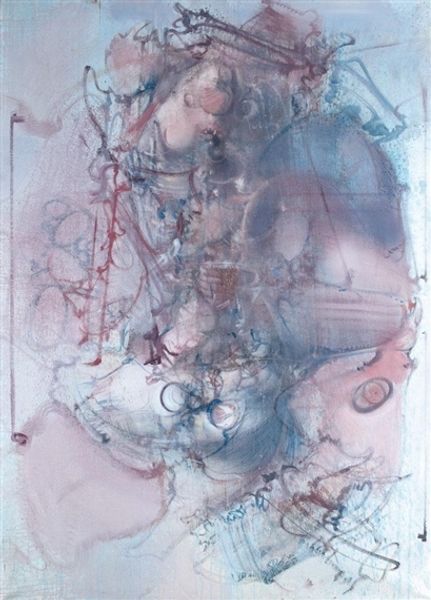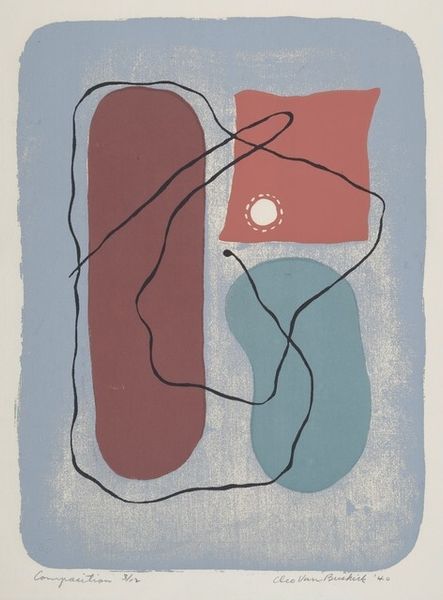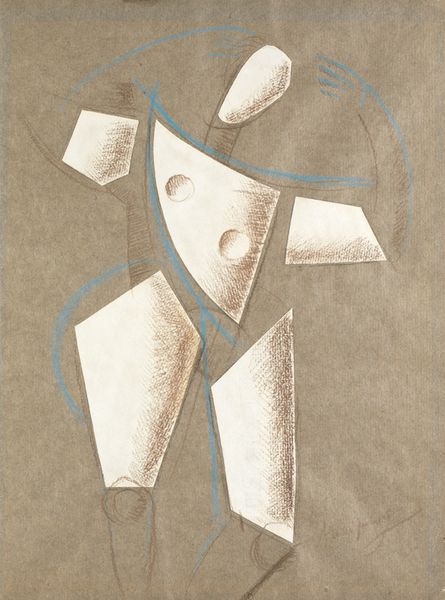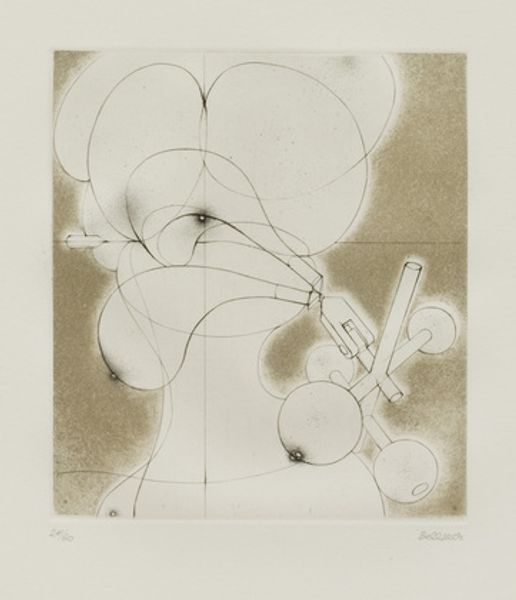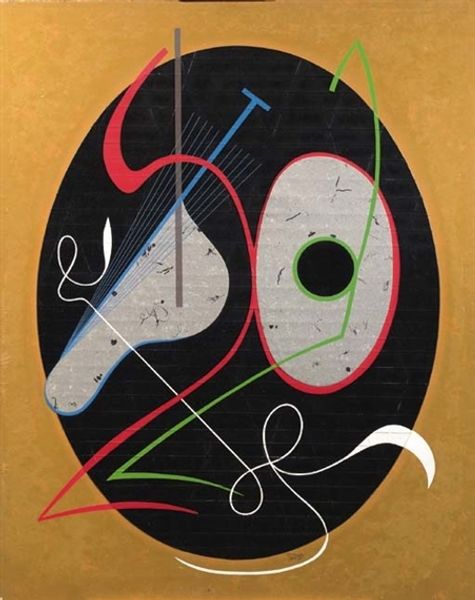
mixed-media, painting
#
mixed-media
#
painting
#
constructivism
#
geometric
#
abstraction
#
modernism
Copyright: David Kakabadze,Fair Use
Editor: Right now we're looking at "Composition," a mixed-media painting from 1926 by David Kakabadzé. The pastel colors are beautiful. It feels like an astronomical chart made with soft dreams. What do you see in this piece? Curator: It reminds me of the cosmos viewed through the lens of early 20th-century avant-garde sensibilities. Kakabadzé's Constructivist approach is fascinating; he merges the objective clarity of geometry with the elusive qualities of feeling. There's a visual harmony, but the symbolism remains wonderfully ambiguous. Those seemingly random dashes and lines... could they be a coded language? Or perhaps just Kakabadzé whistling a tune to the universe, expressing his presence. Does the central circle remind you of something specific? Editor: I didn't notice the suggestion of an eye formed by that central circle and some nearby lines. Do you think it is looking inwards or outwards? Curator: Excellent observation. I wonder if Kakabadzé is nudging us towards introspection. Art, at its heart, can be the bridge between observation and reverie. It doesn't impose conclusions; instead, it encourages imaginative meandering. Much like gazing up at the star-freckled abyss. I find Kakabadzé hints at an infinity we each hold within ourselves. A curious dance between the known and the unknowable, would you say? Editor: Definitely! Now when I look, I feel like I am standing at a precipice, both humbled and empowered by what could be out there. Curator: Yes, beautifully put. We started with geometric abstraction and ended up contemplating our place in the universe. Wonderful. Editor: This artwork makes me see how abstraction can carry deeper meaning than you would first imagine.
Comments
No comments
Be the first to comment and join the conversation on the ultimate creative platform.
